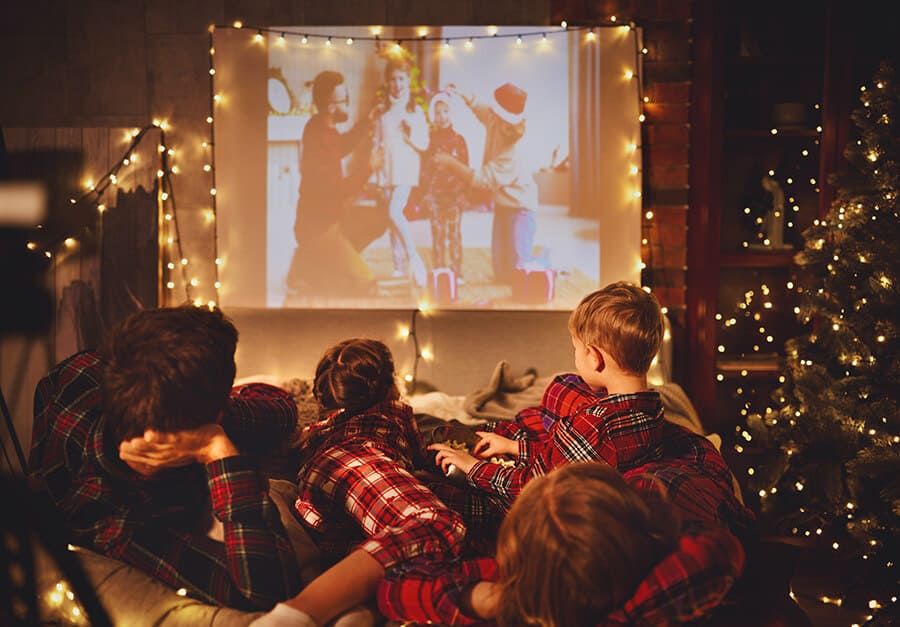Each Christmas, we become obsessed with the same sort of routines that awaken our holiday spirit. Right after Halloween, we start getting that warm fuzzy feeling that we’re constantly being drawn closer to the holidays, and we start doing the same things we do each year, listening to the same music, buying the same decorations and watching the same movies? But why do we tend to do such things?
Although we’re witnessing time changing, religions taking a less prominent role into people’s lives, and modern alternatives taking over – there is one thing that has become evergreen: that’s celebrating Christmas.

People seem to love it, whether they’re religious or not. We love the atmosphere, the scents and sights that remind us of childhood, the idea of cosiness and exchanging gifts with our loved ones, while snow falls outside and there’s a Christmas tree we have picked with so much enthusiasm.
It’s something people have done since forever, year after year, and it’s not becoming dull at all. This tells us that us humans are drawn to habits, things that are familiar and especially things that can come easy.
According to Crobox, this is because our brains are wired to use cognitive biases to navigate through life easier, and the holiday season becomes part of that.
It is said in the blog from Crobox: “Cognitive biases are mistakes in cognitive processes like reasoning, evaluating, and remembering. These can be the result of automatic processes that happen within our subconscious mind and are often based off of a person’s preferences and beliefs.”
And the same pattern explains why we watch the same Christmas movies, and listen to the same Christmas songs. According to research conducted by Amazon this year, the average Brit listens to Mariah Carey’s All I Want for Christmas is You 16,000 times in their lifetime.
Love Actually (2003), It’s A Wonderful Life (1946), Elf (2003), and The Muppet’s A Christmas Carol (1992), Home Alone (1990) – once somebody mentions these movies, we are automatically set back in our minds to a Christmas mood.
Personally, I can freely say that I have watched Home Alone in the region of 50-60 times, along with my five siblings and my parents.
And I’m saying we would all simply sit in front of the TV, and laugh at the movie scenes like we were seeing them for the first time. There was this relief in our hearts, knowing that the story ends well at the end of it, that Kevin’s family reunites and they have a warm Christmas morning once all the plot is resolved.
It turns out that this is exactly why we watch the same movies all over again: The positivity and reassurance.
What do all Christmas movies have in common?
The plot of every Hallmark movie is about a career woman who is too busy for love but she has to move to a small town where a handsome local bachelor teaches her about the true spirit of the holiday. It starts snowing and they kiss. There is also a dog.
— Joel Doubleyou (@JoelDoubleyou) November 19, 2018
We know pretty much what happens in 98% of all Christmas movies. At some points, all characters, especially protagonists realise the importance of love, family and human connection.

There are always stories of people traveling miles to meet their loved ones in the other side of the world, people whose wishes and thoughts become realises as they celebrate holidays in their festive hometowns.
And we absolutely love this – the knowing what’s going to happen and all the clichéd positivity. We feel like we’re actually the directors of the movie itself.
Several authors argue that this is because repetition breeds affection, hence, we enjoy the enormous satisfaction of watching the same movies over and over again.
As a matter of fact, scientists call this the ‘mere exposure effect’, by which they argue that to us humans, familiar things are easier to process.
Our brains love happy endings. And that’s what Christmas movies are all about. No wonder Hallmark does not seem to let go of this movie category. We fall for all of them every single time, because at the end of the day – we yearn for connection, love and togetherness.
Photos: Shutterstock
Want more psychology articles? How about this one?
Support us!
All your donations will be used to pay the magazine’s journalists and to support the ongoing costs of maintaining the site.
Share this post
Interested in co-operating with us?
We are open to co-operation from writers and businesses alike. You can reach us on our email at cooperations@youthtimemag.com/magazine@youthtimemag.com and we will get back to you as quick as we can.









